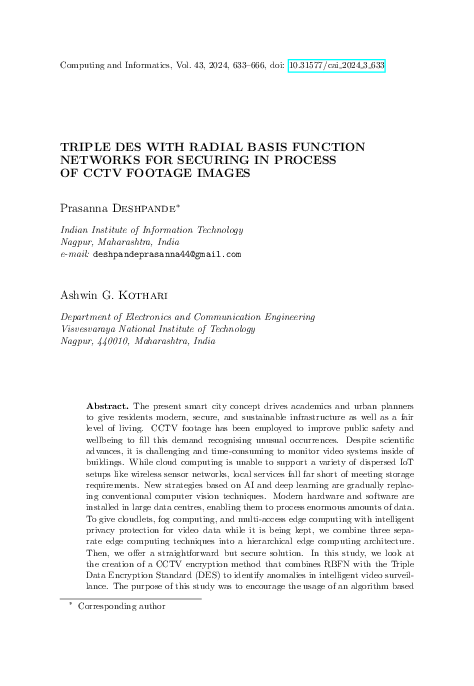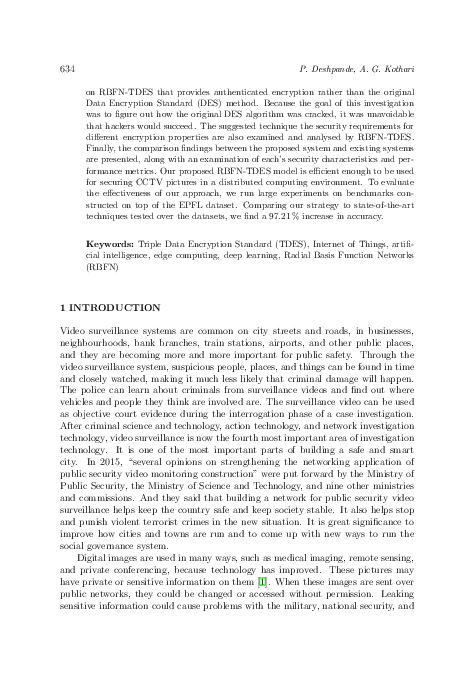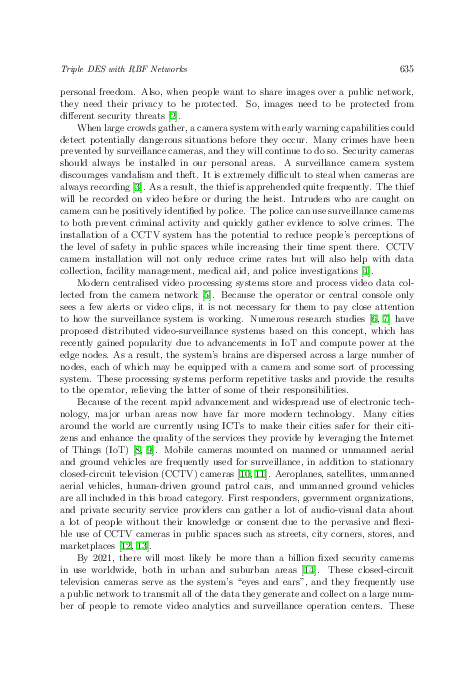Triple DES with Radial Basis Function Networks for Securing in Process of CCTV Footage Images
keywords: Triple Data Encryption Standard (TDES), Internet of Things, artificial intelligence, edge computing, deep learning, Radial Basis Function Networks (RBFN)
The present smart city concept drives academics and urban planners to give residents modern, secure, and sustainable infrastructure as well as a fair level of living. CCTV footage has been employed to improve public safety and wellbeing to fill this demand recognising unusual occurrences. Despite scientific advances, it is challenging and time-consuming to monitor video systems inside of buildings. While cloud computing is unable to support a variety of dispersed IoT setups like wireless sensor networks, local services fall far short of meeting storage requirements. New strategies based on AI and deep learning are gradually replacing conventional computer vision techniques. Modern hardware and software are installed in large data centres, enabling them to process enormous amounts of data. To give cloudlets, fog computing, and multi-access edge computing with intelligent privacy protection for video data while it is being kept, we combine three separate edge computing techniques into a hierarchical edge computing architecture. Then, we offer a straightforward but secure solution. In this study, we look at the creation of a CCTV encryption method that combines RBFN with the Triple Data Encryption Standard (DES) to identify anomalies in intelligent video surveillance. The purpose of this study was to encourage the usage of an algorithm based on RBFN-TDES that provides authenticated encryption rather than the original Data Encryption Standard (DES) method. Because the goal of this investigation was to figure out how the original DES algorithm was cracked, it was unavoidable that hackers would succeed. The suggested technique the security requirements for different encryption properties are also examined and analysed by RBFN-TDES. Finally, the comparison findings between the proposed system and existing systems are presented, along with an examination of each's security characteristics and performance metrics. Our proposed RBFN-TDES model is efficient enough to be used for securing CCTV pictures in a distributed computing environment. To evaluate the effectiveness of our approach, we run large experiments on benchmarks constructed on top of the EPFL dataset. Comparing our strategy to state-of-the-art techniques tested over the datasets, we find a 97.21 % increase in accuracy.
reference: Vol. 43, 2024, No. 3, pp. 633–666


